Rental Rate Calculator
![]() You will need to download the vacation rental file which is in the Microsoft excel format .xls in order to calculate the approximate rental costs.
You will need to download the vacation rental file which is in the Microsoft excel format .xls in order to calculate the approximate rental costs.
You will need :
- The Program Microsoft Excel version 2003, 2007 and or 2010
- To Download the VC Rental Excel file via the Download Now Button
- To enable "Macros" in Excel in order for the rates to calculate .
Macros," where Excel is concerned, are simply sets of instructions that tell Excel to automate some process (or processes) inside the spreadsheet.
There are directions below on how to enable "Macros" for Excell 2003, 2007 and 2010
Enabling Macros in Excel 2003 and Older
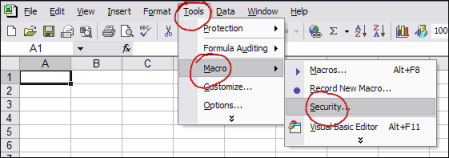
This will open up a message box like the one shown below.
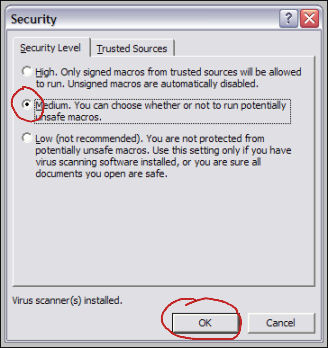
Checking the radio button beside "Medium" (which is what I'd recommend) means Excel will prompt you for permission each time a macro tries to run. Checking the radio button beside "Low" (not something I'd encourage!) means Excel will have free reign to run any and all macros in the spreadsheets you open.
You might notice the words "Virus scanner(s) installed" in the bottom left corner of that screenshot. Having a good antivirus program running at all times is a great idea; having a good antivirus program running when you're using Excel macros is a must.
- Complete the procedure above, then save and close your spreadsheet.
- Close Excel completely.
- Reopen Excel and your spreadsheet
- Complete the procedure above once more
Yeah, it's odd, but I find that in Excel 2003, I usually have to change the security settings, save, and close Excel a couple of times before the changes take effect. It's annoying ... but that's life, right?
Enabling Macros in Excel 2007
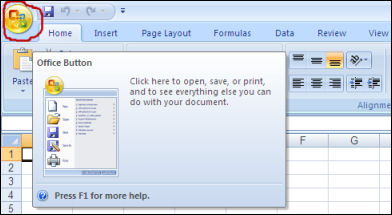
The "Office Button" is the fancy button in the top left corner — the one with the colorful Office logo. Click it to open the menu shown in the next step.
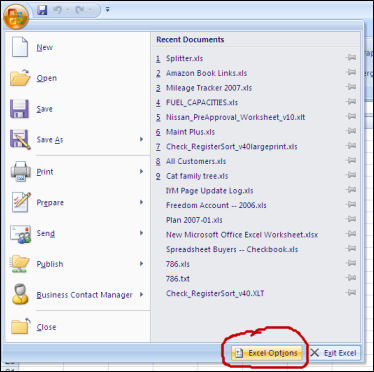
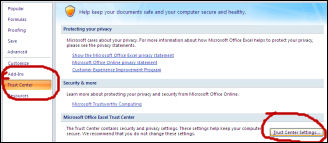



After you click "OK" and the window closes, your macros should function normally. Because you selected "Disable all macros with notification" in Step 4 above, you will need to follow Steps 8 and 9 each time you open a spreadsheet that contains macros (if you want the macros to run, that is).
Alternately, in Step 4 above, you could select "Enable all macros." This would allow any and all macros to run freely at all times. But I would not suggest it! Don't do this unless you are ABSOLUTELY SURE you won't be downloading or using unsafe spreadsheets (and by extension, macros) from ANY source! Malicious macros and Active-X controls can do serious damage to your computer and/or network!
Excel 2007, Macros, Encryption, and Antivirus Issues
If Excel 2007 is blocking macros due to problems with "encryption" and your antivirus software, and you're not seeing the "Enable this content" radio button as shown above in Step 9, you likely need to download the latest Service Pack for Office 2007. For me, the fix was installing Office Suite Service Pack 2, found here:
Microsoft has a bit of info on this issue on its Knowledge Base Article 927150.
Alternately, you can save the offending file in Excel 2003 format (.xls), and the macros should run properly — assuming you've made the Excel 2007 changes noted above in Steps 1 through 9, of course.
Enabling Macros in Excel 2010
With Excel 2010, Microsoft has added an additional layer of protection — over and above that found in Excel 2007, which centered on simply finding the "hidden" menus where macros can be enabled.
When opening a macro-enabled spreadsheet, by default, Excel 2010 will disable macros and show its new "Protected View" ribbon at the top of your screen:
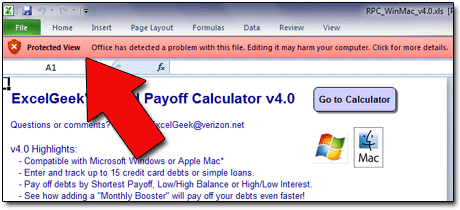
This "Protected View" feature means that enabling macros has now become a two-part process. To get things rolling, we need to "turn on," or enable, macros in Excel 2010. So follow along:

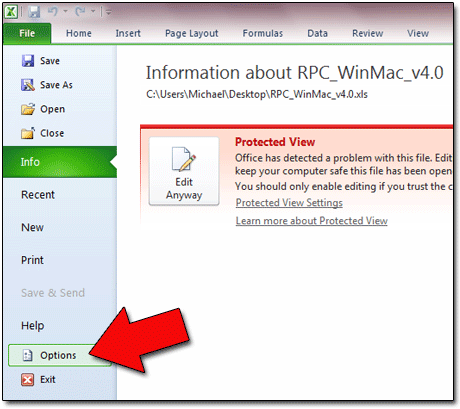
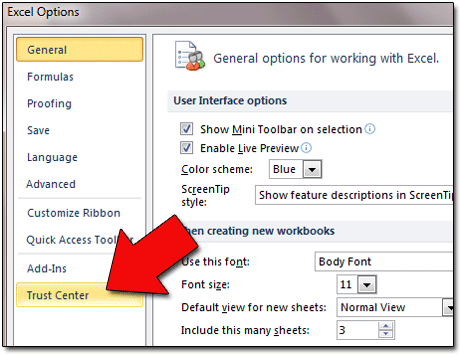
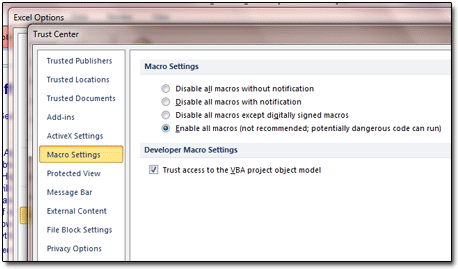
You've now enabled macros in Excel 2010. However, if "Protected View" is enabled, which it WILL be by default, then macros will still NOT run.
Rather than disabling "Protected View," a feature that, actually, I'm glad Microsoft added, I would suggest that you create a "Trusted Locations" folder and save your trusted, macro-enabled spreadsheets in it, and run them from there. Doing so will allow Excel macros to run, but only in spreadsheets that you've stored in the folder (or folders) you designate as "Trusted Locations."
To create and designate a "Trusted Locations" folder:
My "safe" folder, as an example, is called "Excel Documents" and is located at "C:\DATA\Excel Documents\" but you can name yours whatever suits you.
At this point, as an example, if you were to download a macro-enabled spreadsheet from the internet, and save it to your desktop, its macros would not run when you opened the file.
However, if you saved that same spreadsheet into a folder you designated as a "Trusted Location," the macros would then execute.